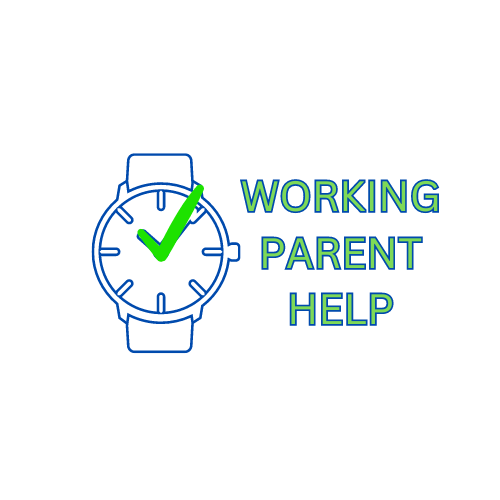
How to Teach Kids Emotional Intelligence from an Early Age
As a busy working parent, juggling work deadlines, multiple kids, and a never-ending list of afterschool activities, you might wonder how in the world you’re supposed to teach your child emotional intelligence (EI). Between soccer practice, math homework, and the occasional sibling rivalry, adding one more thing to the list might seem impossible.
Fear not! Teaching your kids EI doesn’t require hours of deep philosophical discussions (though, wouldn’t it be impressive if your toddler could debate the meaning of life?). With a few practical strategies, a dash of patience, and a sprinkle of humor, you can help your child develop the emotional skills they need to thrive.
1. Label Their Emotions 🎭
If your child is crying over their lost toy as if it were the end of the world, chances are they’re feeling more than just sad. Helping them identify emotions is the first step in emotional intelligence.
How to Do It:
-
Use Everyday Moments: Instead of saying, "Stop crying!" try, "I see you're feeling really frustrated because you can't find your favorite teddy bear."
-
Read Emotion-Focused Books: Books like The Color Monster or Llama Llama Mad at Mama introduce kids to different emotions through engaging storytelling.
-
Use Emotion Charts: Create a simple chart with facial expressions and labels like happy, sad, frustrated, and excited. Have your child point to how they feel throughout the day.
This technique helps children recognize their own emotions and prepares them for step two—managing them!
2. Teach Healthy Coping Skills 🧘♀️
Now that your child can identify emotions, they need tools to handle them. Otherwise, every minor inconvenience could result in an award-worthy tantrum.
Healthy Coping Strategies:
-
The Magic of Deep Breathing: Teach them to inhale deeply and exhale slowly. (Bonus: It works for parents, too, when dealing with a toddler meltdown at the grocery store.)
-
Create a Calm-Down Space: A cozy corner with pillows, a sensory toy, or a weighted blanket can be a game-changer when your child needs to cool off.
-
Encourage Physical Outlets: Jumping jacks, running in place, or even a quick dance party can help children release pent-up emotions in a healthy way.
Remember: "Just breathe" works better when you've already taught them how to breathe like a mini-Zen master.
3. Model Emotional Awareness 🧑🏫
Your kids are always watching. If you scream at the driver who just cut you off in traffic, guess what? Your child will mirror your reactions when their sibling takes the last cookie.
Ways to Model EI:
-
Express Your Own Emotions: Say things like, "I'm feeling overwhelmed because there's so much laundry to do. I think I’ll take a deep breath and tackle one load at a time."
-
Show Healthy Responses: Instead of yelling when frustrated, say, "I’m feeling upset right now, so I’m going to take a short walk to calm down."
-
Apologize When Necessary: If you lose your cool (because let’s be real, it happens), show them that saying "I'm sorry" is part of emotional growth.
You don’t have to be perfect, just mindful. Kids learn more from what you do than what you say.
4. Encourage Empathy 🤝
Empathy is the secret sauce of emotional intelligence. It helps kids build better friendships, resolve conflicts, and—bonus—reduces sibling wars over who gets the biggest slice of pizza.
How to Foster Empathy:
-
Ask Thoughtful Questions: When your child sees someone upset, ask, "How do you think they feel right now?"
-
Play Role-Playing Games: Use dolls or stuffed animals to act out scenarios where one character is sad or angry. Talk about how they can help.
-
Encourage Volunteering: Acts of kindness, like donating toys or helping a friend, naturally build empathy.
Empathy takes practice, but over time, your child will start to see things from another person’s perspective—making them kinder and more compassionate.
5. Validate Their Feelings 🗣️
Nothing is more frustrating to a child than hearing, "You're overreacting." (Let’s be honest, even adults hate hearing that!) Instead of dismissing their emotions, acknowledge them.
How to Validate Feelings:
-
Listen Actively: Put down your phone, make eye contact, and let them talk.
-
Use Reflective Phrases: Instead of "Stop being so dramatic," try "I can see that you’re really upset about this. Let’s talk about it."
-
Give Them a Safe Space to Express Emotions: Whether it's through words, drawing, or playing, let your child express what they're feeling.
Validating their emotions doesn’t mean giving in to every demand—it means acknowledging their feelings so they can move forward in a healthy way.
The Long-Term Benefits of Teaching Emotional Intelligence 🎓
Emotional intelligence isn't just about surviving toddler tantrums or middle school drama—it sets your child up for success in all aspects of life. Studies show that kids with strong EI:
-
Have better social relationships
-
Perform better academically
-
Handle stress and challenges more effectively
-
Grow into emotionally intelligent adults (a win for future coworkers and spouses!)
Final Thoughts + Call to Action
Teaching emotional intelligence doesn’t require hours of extra work—just small, consistent actions woven into your daily routine. By labeling emotions, teaching coping strategies, modeling emotional awareness, encouraging empathy, and validating feelings, you’re giving your child a lifelong gift.
Now, we’d love to hear from you! What strategies have worked in your home? Share your stories in the comments below! And if you’re looking for more parenting tips, check out our other blog posts for practical advice with a side of humor.
Because let’s be honest, parenting is already serious enough—we might as well laugh along the way!
